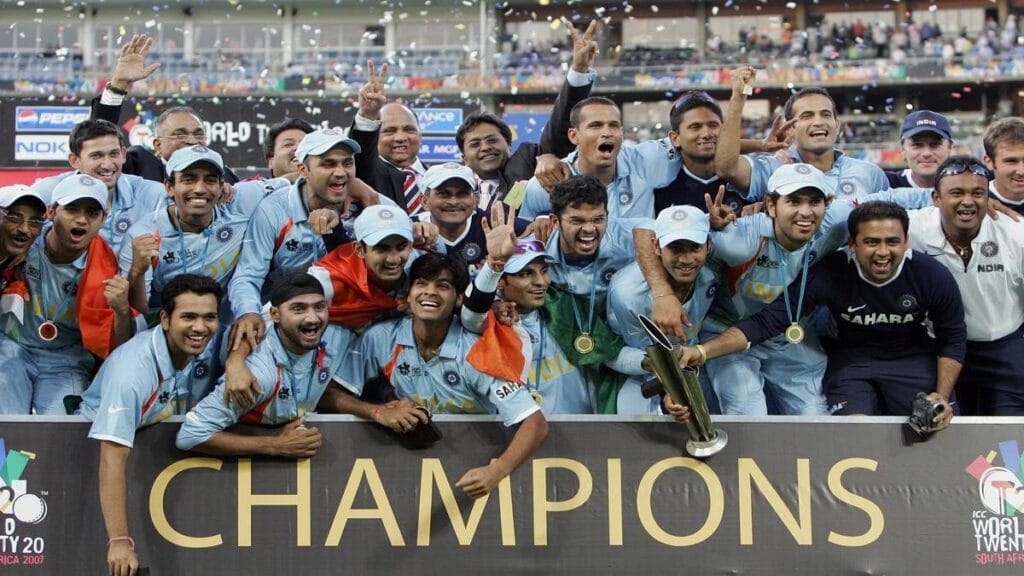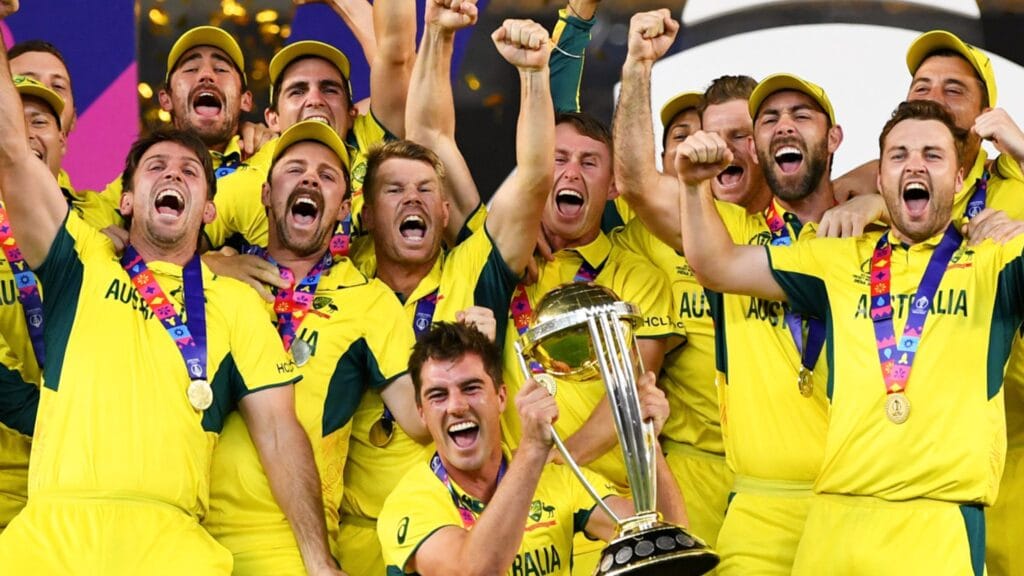The Evolution Of Cricket: From It’s Origins To Modern Formats Like T20 And The Hundred
The Evolution Of Cricket: From It’s Origins To Modern Formats Like T20 And The Hundred
Cricket is more than a game; it is a cultural phenomenon that has captured audiences around the world for centuries. From its humble beginnings in rural England to the dazzling lights of T20 and The Hundred, there has been no transformation quite like cricket’s. This paper will carry readers through the engrossing journey of cricket: its birth, development, and evolution into modern formats that cater to today’s audience.

The Birth of Cricket
The birth of cricket has been shrouded in mystery, and historians date it back to 16th-century England. History says the game came into being as a rustic pastime in the counties of Kent and Sussex, where shepherds used to play with a ball and a stick. In the 17th century, the game of cricket gained popularity, and rules began falling into place.
One of the earliest references to cricket was in a 1598 court case in Guildford, Surrey, where one witness mentioned “creckett” or some variant of the game being played as early as 1550. Partly due to the patronage of wealthy aristocrats who formed clubs and sponsored matches, cricket had become a more organized game by the 18th century. Founded in the 1760s, the Hambledon Club is generally regarded as the nursery of modern cricket.
Birth Of International Cricket: The Late 19th Century
It was the turning point for the late 19th century when cricket witnessed its dawn. In this connection, in 1877, England played their very first match with Australia. It took place at the world-famous Melbourne Cricket Ground, thereby birthing what is nowadays renowned as Test Cricket. The present and modern rivalries all grew out of those.

The Ashes, the biennial Test series between England and Australia, was instituted in 1882 and has been one of the most famous biennial contests of the game ever since. International cricket continued to gain strength over time with the induction of teams from India, South Africa, the West Indies, and others into its fold. In 1909, the Imperial Cricket Conference was formed with the aim of spreading the game throughout the world; today, that organization is called the International Cricket Council.
Cricket In The 20th Century: The Rise of Limited-Overs Formats
The T20 Revolution
The 21st century saw another revolution when Twenty20, more commonly known as T20 cricket, was invented. First conceived in England way back in 2003 as a slam-bang, action-packed, and entertainer-friendly version of the game, T20 matches fast became very popular among followers. Matches were further shortened to just 20 overs per side, gaining tremendous appeal in its target groups.

The first T20 World Cup, held in 2007, was a runaway success when India beat Pakistan in the most pulsating final. The tournament sealed the prospect of T20 as a vehicle for the global proliferation of cricket and attracting new audiences. The domestic T20 leagues, such as the IPL, BBL, and CPL, have been enormously popular in mixing sport with entertainment.
The Hundred: Cricket For The Modern Age

The Hundred, a new format introduced by England in 2021, features 100 balls per innings to further simplify the game for new audiences; fresh rules such as 10-ball overs and strategic timeouts; teams constituted by both men’s and women’s sides—a huge stride toward gender equality. It caters to a younger audience and families without selling out the soul of the game of cricket. Firstly, many traditionalists expressed misgivings, yet The Hundred seemingly started gathering much speed with heavy crowds and big TV ratings; but it still adopted a policy incorporating global superstars and concentrating more on the fun aspect: something that the identity of contemporary cricket depends upon.
The Role of Technology in Cricket’s Evolution
Technologically, in the broader sense, that has been the real driver of modern cricket: innovations such as DRS, Hawk-Eye, and the Snickometer have brought a layer of fairness into the game by making umpiring decisions much more accurate; similarly, with better broadcasting techniques—be that high-definition cameras or real-time analytics—that have transformed how fans experience cricket.

But the social media sites have further revolutionized the game by enabling the players to directly interact with the fans and created a cricketing community around the world. From live streaming matches to giving behind-the-scenes insight into what goes on, technology has brought the game closer to its audience.
Balancing Tradition with Innovation
One of the strengths of cricket is its ability to balance tradition and innovation. Where Twenty20 and The Hundred cater to modern tastes, Test cricket remains a different beast to purists’ hearts. Inaugurated in 2019, the ICC World Test Championship tries to keep the relevance of Test cricket alive with a competitive league structure around the format.
That is a tightrope walk for cricket boards across the globe. With investment in grassroots development and inclusive programs, they can only hope that the game will grow without losing its rich heritage.
The Globalization Of Cricket
This surely has to be one of the aspects that have made the expansion of cricket beyond traditional strongholds quite remarkable. Afghanistan, Ireland, and Nepal have come to be recognized as competitive teams; this says volumes about the popularity of the game around the world. Further proof of this may be seen in the actions of the ICC vis-a-vis the marketing of cricket to non-traditional markets such as the United States and China.
The franchise leagues have also played their part in globalizing the game by uniting players from different walks of life. The IPL proved to be a melting pot of cultures where cricketers from different countries come and gel well with each other.

The Future of Cricket
With them, cricket will surely keep moving ahead. On one hand, further re-engagement of fans and better performances by the players are surely promised with technologies like Virtual Reality and Artificial Intelligence, while on the path toward sustainability, enormous momentum in gaining initiatives like Eco-Stadia and Carbon Neutral matches firmly plants the sport on the world environment agenda.
Moreover, women’s cricket has stood as a clear testimony to the inclusiveness of the sport and its growing status. Tournaments like the Women’s IPL and ICC Women’s World Cup really have caught the eyeballs of all and inspired a new generation of women cricketers.
That would be the case with the game of cricket, from rustic pastime to global phenomenon—it’s a tale of adaptability, resilience, and innovation. With time, each succeeding era lent its flavor to cricket, enriching its legacy by automatically allowing it to appeal to wider audiences. As cricket strides firmly toward modern formats like T20 and The Hundred, tradition remains its most vital anchor—to be sure, in a timeless sense.
Be it the die-hard fan or the casual observer, there is something in it for everyone in cricket. Its journey is far from over, and as it does move on, breaking new grounds, one thing is for sure: it will always remain closest to the heart and the most dear part of our lives for many, many generations to come.
READ THIS- https://dncricket.com/from-icc-world-cup-to-ipl-know-the-crickets/
You may also like
Calendar
| M | T | W | T | F | S | S |
|---|---|---|---|---|---|---|
| 1 | 2 | 3 | ||||
| 4 | 5 | 6 | 7 | 8 | 9 | 10 |
| 11 | 12 | 13 | 14 | 15 | 16 | 17 |
| 18 | 19 | 20 | 21 | 22 | 23 | 24 |
| 25 | 26 | 27 | 28 | 29 | 30 | 31 |
Leave a Reply